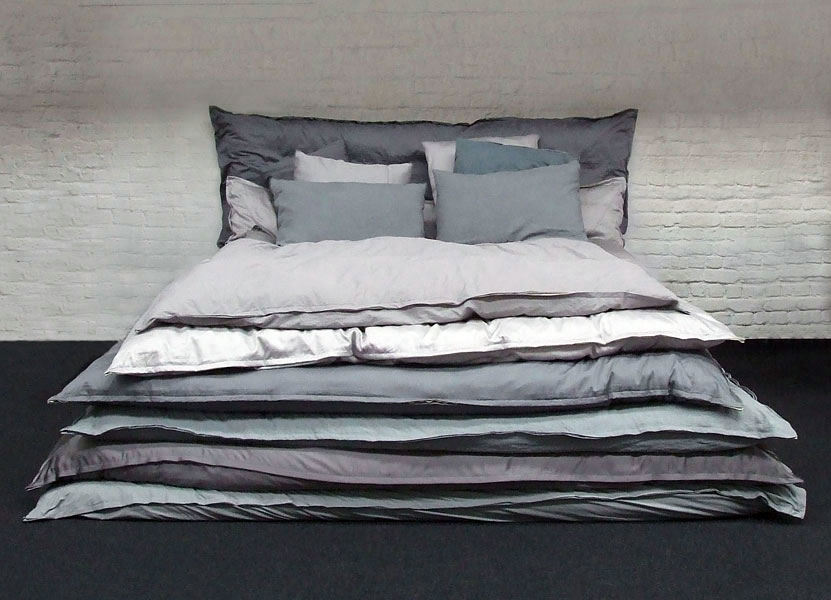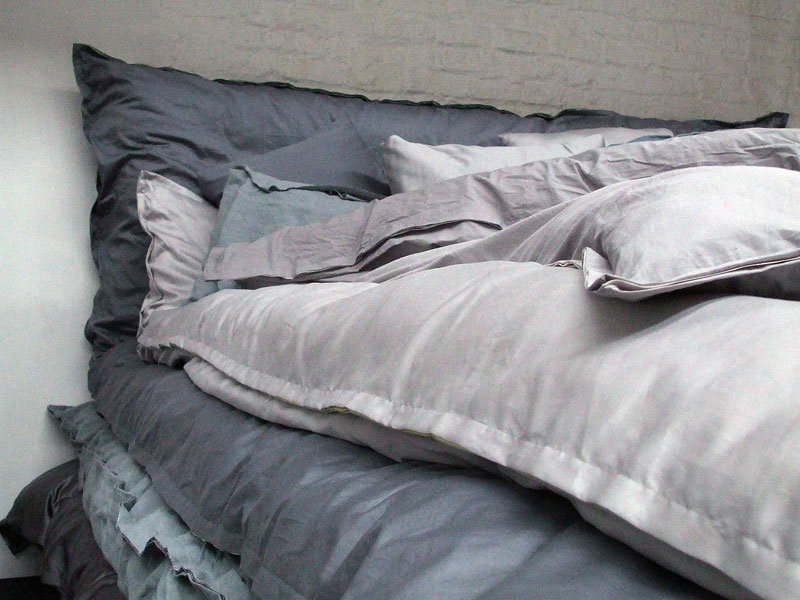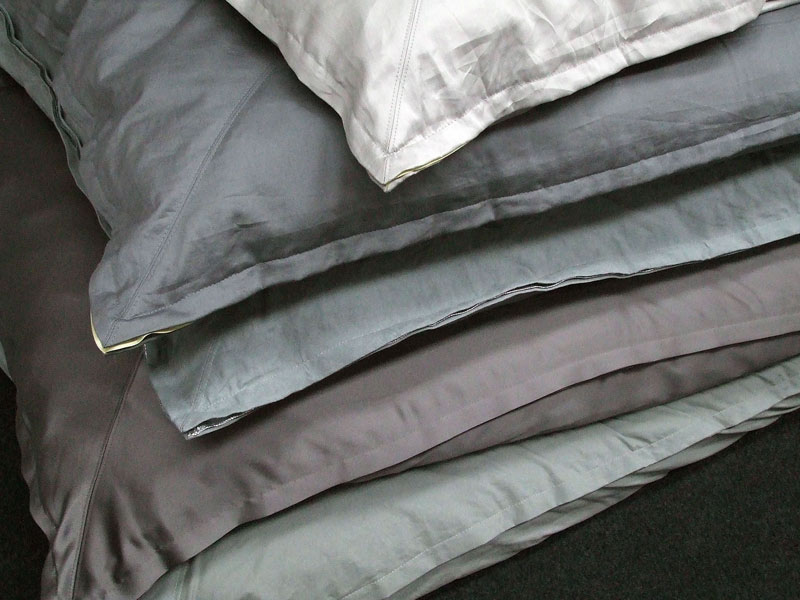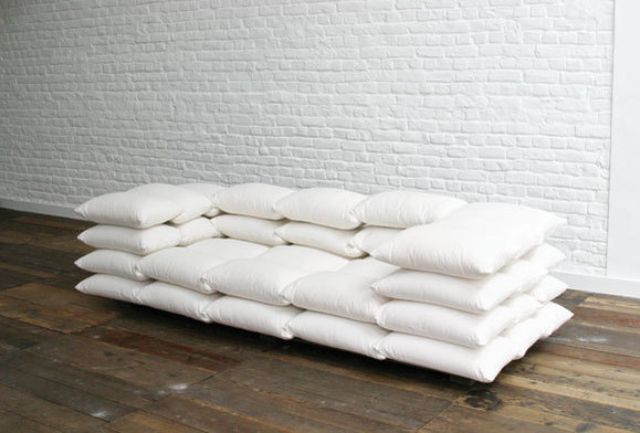Make the Bed: Simple Stacked Comforters for Lazy Sleepers

Ever enter the bedroom and realize you still have to make the bed before you can crash for the night? Making sleep simpler, one cushion at a time, this design may be the simplest do-it-yourself bed ever conceived.

Created by textile designer Linda Topic for a competition, this is a semi-serious look at an easy alternative to complex and costly wooden frames. Hard to say how well the super-soft approach would work for less-tolerant backs, but the idea is genuinely ingenious.

The core set of six comforters replace the need of any joints or support connections, while an impromptu headboard is likewise plush – the pillows are a given. For simplicity, the colors (or lack thereof) span a range from white to dark gray like the Belgian skies that inspired them. The result is beautifully textural, minimalist and luxuriously comfortable. One can’t help but think of the fairytale The Princess and the Pea. If you felt a lump of anything underneath all these layers, you’re one sensitive person indeed.

If any of this looks familiar, it may be because Dornob covered something quite similar once before – the work of Christian Hoegner which provides an all-white contrast to this bed in the form of a couch composed entirely of cushions. Christian’s sofa sleeper uses smaller cushions to achieve a similar effect as “The Bed”, but for use as a couch instead of a bed.
“Linda Topic focuses on revealing matter through simple and careful gestures. Whether using artisanal or industrial techniques (felting, silkscreen printing, jacquard weaving, laser cutting…) her work defines a dynamic space where matter and color are explored and meet. She pursues these explorations alongside collaborators within their various disciplines – artists, artisans, editors, design studios and interior designers. Linda Topic’s different projects are invitations to an open and intuitive use of our daily environment.”




